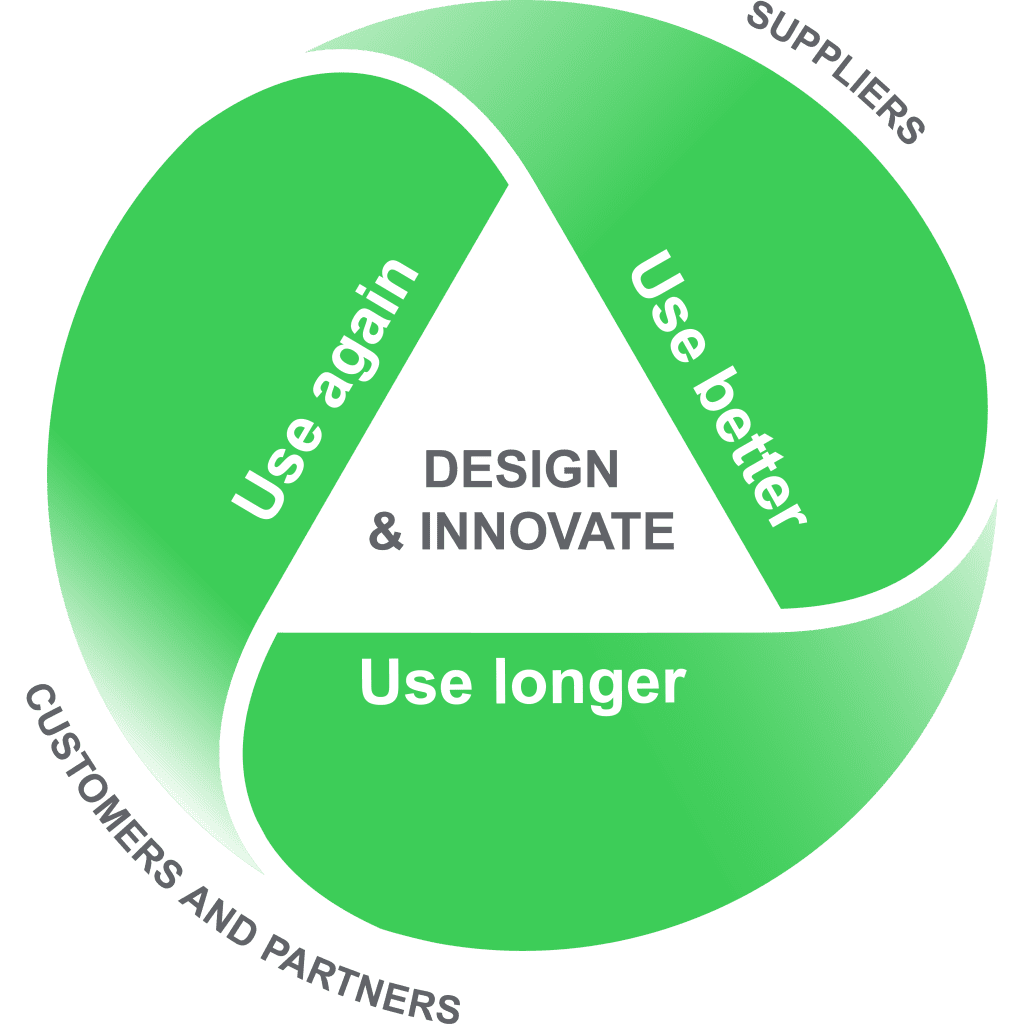Author: Rinnovabili.it
Giornata della Terra: l’evento che ogni anno mobilita un miliardo di persone per la salvaguardia del Pianeta Terra. – Earth Day

 Giornata Mondiale della Terra
Giornata Mondiale della Terra
La Giornata Mondiale della Terra è una manifestazione internazionale per la sostenibilità ambientale e la salvaguardia del nostro pianeta.
Conosciuta nel mondo come Earth Day, la Giornata della Terra di aprile, è l‘evento green che riesce a coinvolgere il maggior numero di persone in tutto il pianeta. Si calcola infatti che ogni anno, nel periodo dell’equinozio di primavera, si mobilitino circa un miliardo di persone.
Storia della Giornata Mondiale della Terra
L’Istituzione della Giornata mondiale della Terra si deve a John McConnell, un attivista per la pace che si era interessato anche all’ecologia: credeva che gli esseri umani abbiano l’obbligo di occuparsi della terra e condividere le risorse in maniera equa. Nell’ottobre del 1969, durante la Conferenza dell’UNESCO a San Francisco, McConnell propose una giornata per celebrare la vita e la bellezza della Terra e per promuovere la pace. Per lui la celebrazione della vita sulla Terra significava anche mettere in guardia tutti gli uomini sulla necessità di preservare e rinnovare gli equilibri ecologici minacciati, dai quali dipende tutta la vita sul pianeta.
La proposta ottenne un forte sostegno e fu seguita dal festeggiamento del “Giorno della Terra” della città di San Francisco: la prima celebrazione della Giornata della Terra fu il 21 marzo 1970. La proclamazione della Giorno della Terra ufficializzava, con un elenco di principi e responsabilità precise, un impegno a prendersi cura del Pianeta. Questo documento venne firmato da 36 leader mondiali, tra cui il Segretario generale delle Nazioni Unite U Thant, Margaret Mead, John Gardner e altri (L’ultima firma di Mikhail Gorbachev è stata aggiunta nel 2000).
Un mese dopo, il 22 aprile 1970, la definitiva “Giornata della Terra – Earth Day” veniva costituita dal senatore degli Stati Uniti Gaylord Nelson, come evento di carattere prettamente ecologista. Questa Giornata della Terra era però pensata come una manifestazione prettamente statunitense, fu Denis Hayes (il primo coordinatore dell’Earth Day) a rendere la manifestazione una realtà internazionale: dopo aver “contagiato” le città americane, Hayes fondò l’Earth Day Network arrivando a coinvolgere più di 180 nazioni.

 Villaggio per la Terra 2023 a Roma
Villaggio per la Terra 2023 a Roma
La proclamazione della Giornata della Terra si inseriva in un contesto storico dove si era appena presa coscienza dei rischi dello sviluppo industriale legato al petrolio: nel 1969 a Santa Barbara, California, una fuoriuscita di greggio aveva ucciso decine di migliaia di uccelli, delfini e leoni marini. L’opinione pubblica ne fu scossa e gli attivisti iniziarono a ritenere necessaria una regolamentazione ambientale per prevenire questi disastri.

 Nel 2020 si è celebrato il 50° anniversario della Giornata Mondiale della Terra – Earth Day
Nel 2020 si è celebrato il 50° anniversario della Giornata Mondiale della Terra – Earth Day
Giornata Mondiale della Terra: le prime celebrazioni
Le prime celebrazioni del Giorno della Terra si svolsero in duemila college e università , circa diecimila scuole primarie e secondarie e centinaia di comunità negli Stati Uniti. Anche se l’evento ebbe una portata nazionale si dovette aspettare il 1990 per vedere un altro Earth Day significativo.
Nel 1990 la Giornata della Terra mobilitò 200 milioni di persone in 141 paesi ponendo l’attenzione sulle questioni ambientali nel palcoscenico mondiale. Le attività del giorno della Terra nel 1990 diedero un impulso enorme alla cultura del riciclo in tutto il mondo e contribuirono ad aprire la strada per il Summit della Terra organizzato dalle Nazioni Unite nel 1992 a Rio de Janeiro.
Per trasformare la Giornata della Terra in un evento annuale, piuttosto che uno che si verificava ogni 10 anni, Nelson e Bruce Anderson, organizzatori principali dell’ Earth Day New Hampshire nel 1990, hanno costituito Earth Day USA. Questo comitato ha coordinato le successive celebrazioni del Giorno della Terra fino al 1995, incluso il lancio di EarthDay.org. Dopo il 25 °anniversario del 1995, l’organizzazione passò all’attuale Earth Day Network.
Nel 2000 la Giornata mondiale della Terra combinò lo spirito originale dei primi Earth Day con l’internazionalismo dell’evento del ’90. Il 2000 fu il primo anno in cui venne usato Internet come strumento principale di organizzazione: questo si rivelò prezioso a livello nazionale e internazionale. Kelly Evans direttore esecutivo, arruolò più di 5.000 gruppi ambientali al di fuori degli Stati Uniti, raggiungendo centinaia di milioni di persone con un record di 183 paesi. Leonardo DiCaprio fu l’ospite ufficiale dell’evento, e in circa 400.000 parteciparono all’evento principale non ostante la pioggia fredda di quel giorno.
Alcuni scatti dal Villaggio per la Terra 2018 (Earth Day – Giornata della Terra a Roma)
La Giornata Mondiale della Terra Oggi: Una Festa Globale
Grazie al crescente interesse per la manifestazione, oggi la Giornata mondiale della Terra è diventata la Settimana mondiale della Terra: nei giorni vicini al 22 aprile, numerose comunità festeggiano per un’intera settimana con attività incentrate sulle tematiche ambientali più attuali. Gli eventi vengono utilizzati per sensibilizzare l’opinione pubblica sulle tematiche della sostenibilità, e dagli attivisti, per fare analisi degli scenari odierni e proporre soluzioni concrete. Nel 2017, durante la Settimana della Terra e in aperto contrasto con le nuove “politiche negazioniste” di Trump, si è svolta in decine di città, la Marcia per la Scienza, seguita dalla mobilitazione popolare del clima (29 aprile 2017).
Nell’ambito dell’Earth Day Network, “Earth Day Italia” è considerato uno dei migliori comitati organizzativi, tanto che nel 2015 l’organizzazione italiana è divenuta sede europea del network internazionale. L’edizione del 2016 ha rappresentato un momento di straordinaria importanza per Earth Day Italia, grazie al succedersi di eventi importanti fra cui l’eccezionale visita a sorpresa di Papa Francesco e il collegamento in live streaming con il Ministro Galletti da New York, in occasione della storica firma del primo accordo universale sul cambiamento climatico (COP21).
Villaggio per la Terra – Roma 2017
Ogni anno a Roma, nella bella cornice di Villa Borghese, prende vita il Villaggio per la Terra: una settimana di eventi per tutte le età, che culminano con una serie di imperdibili concerti.
Nel 2017 tra la Terrazza del Pincio e il Galoppatoio di Villa Borghese, Earth Day Italia ha organizzato 5 giorni in cui si sono alternati eventi sportivi, concerti, esposizioni, mostre, convegni, spettacoli, laboratori, attività didattiche, giochi per bambini e ottimo cibo.
Tra i tanti eventi che hanno caratterizzato il Villaggio per la Terra 2017, il principale è stato il Concerto per la Terra. La serata gratuita, che ha preso il nome di “Over the Wall, Mecenati della Bellezza”, è stata presentata da Fabrizio Frizzi ed ha visto la partecipazione degli Zero Assoluto, Noemi, Sergio Sylvestre, Soul System, Ron e La Scelta.
Nel Galoppatoio di Villa Borghese il Villaggio dello Sport ha offerto a tanti la possibilità di praticare decine di discipline sportive differenti, di sperimentare simulatori sportivi virtuali, di assistere alle dimostrazioni di grandi campioni e di lanciarsi in gare, tornei e contest sempre divertenti e all’insegna della sostenibilità. In questo contesto il Coni, il Comitato Paralimpico e decine tra federazioni, associazioni e società sportive, club e campioni hanno offerto un importante contributo in difesa dei valori più autentici dello sport e dell’ambiente.
A caratterizzare maggiormente le attività per i giovani studenti romani è stato il premio “Io Ci Tengo” (#IoCiTengo). Nato per portare l’attenzione delle scolaresche sulle tematiche ambientali, il premio ha cercato di catalizzare progetti, lavori artistici e reportage che raccontassero in maniera innovativa e rivoluzionaria come trasformare il deserto di cemento delle nostre città in una foresta. Fu proprio Papa Francesco, con una partecipazione a sorpresa durante l’edizione 2016, a lanciare il messaggio “Voi trasformate deserti in foreste”. Le scuole hanno partecipato in tanti modi: foto, disegni, articoli, storie e video; con fantasia e immaginazione hanno conquistato l’attestato di Testimone della Terra 2017, mentre i vincitori sono stati nominati Ambasciatrici della Terra 2017.
Inoltre, durante il Villaggio per la Terra, sono state dedicate delle intere giornate sia alla mobilità sostenibile che ai libri, riconoscendo alla mobilità green e alla cultura ruoli fondamentali nel cambiamento verso una cultura della sostenibilità.
Villaggio per la Terra – Roma 2018
La Giornata Mondiale della Terra delle Nazioni Unite è stata celebrata anche nel 2018 con una grande partecipazione che ha portato a Villa Borghese oltre 150.000 persone. Questa 48ª edizione ha visto un Earth Day ricchissimo di iniziative ed venti. Cinque giornate (dal 20 al 25 aprile) dedicate alla tutela del Pianeta con un focus sui 17 Obiettivi di Sviluppo Sostenibile delle Nazioni Unite con altrettante piazze multimediali dedicate agli obiettivi che hanno ospitato talk, laboratori e mostre.
Le attività per i giovani erano inquadrate dal Villaggio per lo Sport, dal Villaggio per Bambini e dal Villaggio per ragazzi.
Il Villaggio per lo Sport ha offerto tantissimi giochi gratuiti e assistiti, ma anche dimostrazioni e tornei. Il Villaggio per Bambini ha ospitato molte attività didattiche che hanno divertito i piccoli, dal grande Parco della Biodiversità dei Forestali, alla Pompieropoli dei Vigili del Fuoco, dagli esperimenti su vulcani e terremoti dell’Istituto Nazionale di Geofisica, al Planetario dell’Istituto Nazionale di Astrofisica.
Il Villaggio dei Ragazzi, dedicato ai più grandicelli e alla scuola è stato protagonista del Festival dell’Educazione alla Sostenibilità e degli Stati Generali dell’Ambiente dei Giovani. A completare i programma per gli adolescenti tanti workshop, iniziative e la staffetta planetaria per la pace #RUN4UNITY.
Durante tutte e cinque i giorni i bambini si sono potuti cimentare con l’Orienteering, il canottaggio simulato, pallavolo, cavalcata sui pony, scherma, ping pong, e-bike, pallamano, tennis, calcio, tiro a segno con la fionda, tiro con l’arco e una alta parete da arrampicata.
Giornata della Terra 2019, proteggiamo la nostre specie
“Protect our species – Proteggi le nostre specie”. Questo il tema della Giornata della Terra 2019. Oggi gli scienziati parlano senza troppe remore di una sesta estinzione di massa, di un “annichilimento biologico” della fauna selvatica. E a differenza delle precedenti cinque estinzioni di massa, causate da catastrofi e disastri naturali, questo sarebbe il primo evento provocato dall’uomo. La distruzione e lo sfruttamento degli habitat unitamente agli effetti del cambiamento climatico stanno, infatti, guidando la perdita di metà della popolazione mondiale di animali selvatici.
“Tutti gli esseri viventi hanno un valore intrinseco e ognuno gioca un ruolo unico nella complessa rete della vita – scrive Eart Day Network – Dobbiamo lavorare insieme per proteggere le specie minacciate e in via di estinzione: api, barriere coralline, elefanti, giraffe, insetti, balene e altro ancora. La buona notizia è che il tasso di scomparsa può ancora essere rallentato e molte delle nostre specie in declino possono recuperare ma solo a patto di lavorare assieme per costruire un movimento globale di consumatori, elettori, educatori, leader religiosi e scienziati che pretendano un’azione immediata”.
Nel 2020 la manifestazione ha celebrato il suo 50esimo anniversario in corrispondenza delle prime chiusure nazionali per arginare la pandemia di COVID-19. Ma la crisi del coronavirus non ha intaccato lo spirito della manifestazione che, in risposta ai lockdown e alle cancellazioni degli eventi in pubblico, si è trasformata in una gigantesca maratona virtuale. Una staffetta digitale che, per 24 ore, ha attraversato il globo raccogliendo azioni grandi e piccole, testimonianze e impegni a favore del Pianeta. “Il coronavirus può costringerci a mantenere le distanze, non ci costringerà a mantenere bassa la voce”, hanno spiegato gli organizzatori dell’Earth Day 2020. “L’unica cosa che cambierà il mondo è chiedere tutti assieme un nuovo modo di procedere. Potremmo essere separati, ma grazie al potere dei media digitali, siamo anche più connessi di prima”. Tema dell’edizione, l’azione per il clima. La pandemia virale ha sottolineato ancora una volta l’importanza di continuare a impegnarsi per contrastare i cambiamenti climatici. D’altra parte il riscaldamento globale è stato segnalato tra le concause della diffusione del Sars-Cov2, assieme all’intenso sfruttamento ambientale e alla distruzione della biodiversità e degli habitat naturali. Gli scienziati hanno avvertito che abbiamo poco più di un decennio per dimezzare le emissioni ed evitare gli impatti più devastanti su fornitura alimentare, sicurezza nazionale, salute globale, condizioni meteo e altro ancora. Tra le azioni da mettere in campo, la Giornata ha promosso la partecipazione all’Earth Challenge 2020, progetto dedicato alla creazione della più grande comunità di Citizen Science (Scienza dei cittadini). Grazie ad un app, disponibile in 11 lingue, è possibile divenire delle sentinelle ambientali, raccogliendo dati che saranno integrati in un’unica piattaforma su qualità dell’aria, l’inquinamento da plastica, qualità idrica, sicurezza alimentare e impatto sul clima locale.
Nel 2021 la Giornata Mondiale della Terra (Earth Day) è stata una maratona multimediale con 13 ore di diretta televisiva. La diretta televisiva è iniziata alle 7:30 del 22 aprile per proseguire fino alle 20:30: dagli studi televisivi di Via Asiago RaiPlay si è collegata con tanti programmi RAI durante tutta la giornata.
In diretta e on demand anche sulla piattaforma www.onepeopleoneplanet.it , numerosi sono stati i contributi, dalla galassia di partner, associazioni, istituzioni, testimonial, esponenti del mondo della scienza, della cultura, dell’arte, dello spettacolo e dello sport.
Nel 2022 la Giornata mondiale della Terra sarà una maratona caratterizzata dal Concerto per la Terra di Earth Day Italia, con la direzione artistica del Maestro Giovanni Allevi

 Allevi, compositore di fama internazionale, è stato nominato Ambassador dello Earth Day European Network durante la COP26 di Glasgow. Il concerto sarà uno spettacolo che il Maestro vuole dedicare alle nuove generazioni in vista della prossima Conferenza sul Clima dell’ONU. L’evento vuole mettere in collegamento tanti artisti provenienti da tante parti del mondo: un’unione artistica in grado di superare ogni confine e diversità, la “Voce della Terra”.
Allevi, compositore di fama internazionale, è stato nominato Ambassador dello Earth Day European Network durante la COP26 di Glasgow. Il concerto sarà uno spettacolo che il Maestro vuole dedicare alle nuove generazioni in vista della prossima Conferenza sul Clima dell’ONU. L’evento vuole mettere in collegamento tanti artisti provenienti da tante parti del mondo: un’unione artistica in grado di superare ogni confine e diversità, la “Voce della Terra”.
Come ogni anno Rinnovabili.it sarà media partner e trasmetterà parte della diretta sul sito e sui canali social. Segui la diretta visitando il sito OnePeopleOnePlanet
Segui gli hashtag ufficiali #OnePeopleOnePlanet #EarthDay2022 #OPOP22 #IoCiTengo
Earth Day Italia 2023: una staffetta di voci per il Pianeta
In occasione della Giornata Mondiale della Terra 2023, torna con la sua quarta edizione la Maratona Multimediale #OnePeopleOnePlanet (#OPOP) di Earth Day Italia. Una staffetta live che dalla Nuvola di Fuksas porterà in diretta su Rai Play dalle 8 di mattina talk show, collegamenti internazionali, testimonianze artistiche, scientifiche e istituzionali. Per culminare alle 21.00 nell’atteso Concerto per La Terra, con grandi cantanti del calibro di Leo Gassmann, Ermal Meta e Tommaso Paradiso.
Ma prima di arrivare alla maratona del 22 aprile, il Galoppatoio di Villa Borghese aprirà le porte il Villaggio per la Terra: 17 piazze multimediali guidate da giovani universitari di diversi atenei che dal 21 al 25 aprile approfondiranno 17 Obiettivi di Sviluppo Sostenibile dell’Agenda 2030 delle Nazioni Unite. Nel palco principale allestito sulla Terrazza del Pincio, invece, si daranno il cambio quotidianamente Talk Show e performance di street artist di fama internazionale che realizzeranno delle opere sul tema ambientale.
“Le celebrazioni italiane della Giornata della Terra – spiega Pierluigi Sassi, Presidente di Earth Day Italia – hanno caratteristiche uniche perché nascono da una storia unica. Storia d’incontro e di dialogo con centinaia di organizzazioni, che negli anni, insieme al Movimento dei Focolari, abbiamo imparato ad accogliere e valorizzare. Crediamo che il nostro vero lavoro sia proprio questo: creare ponti tra persone, tra organizzazioni, tra Paesi, che hanno davvero tanto da dire e da dare ma che a volte solo nel nostro evento trovano l’occasione giusta per iniziare a lavorare insieme”.
Giornata Mondiale della Terra 2024, Pianeta vs Plastica
“Pianeta contro Plastica”, questo il tema che contraddistingue la 54ma edizione della manifestazione. La Giornata Mondiale della Terra 2024 non poteva che affrontare uno dei problemi più sentiti a livello globale quando si parla di tutela amabientale. Riflettori puntati dunque sull’inquinamento dei rifiuti plastici, con l’obiettivo di sollecitare un’azione che riduca l’usa e getta, metta al bando il fast-fashion e investa in tecnologie e materiali alternativi ai polimeri di origine fossile. Chiedendo un riduzione del 60% della produzione di plastica entro il 2024.
In Italia il conto alla rovescia verso l’Earth Day 2024 sarà scandito quest’anno da due eventi:
- il Villaggio per la Terra a Villa Borghese e sulla suggestiva Terrazza del Pincioa Roma: 600 eventi gratuiti e aperti a tutti, tra laboratori ludici e didattici, lezioni, incontri e dibattiti sui temi della sostenibilità ambientale, sociale e dell’innovazione, presentazioni di libri, proiezioni, giochi, dimostrazioni e pratiche sportive, spettacoli, esibizioni musicali e artistiche, e altri eventi culturali.
- il Festival dell’Innovability presso la Casa del Cinema a Roma, pensato per celebrare anche la Giornata mondiale della Creatività e dell’Innovazione che le Nazioni Unite.
Entrambi si apriranno il 18 aprile per proseguire fino a domenica 21 per culminare il 22 aprile nella ormai consueta #OnePeopleOnePlanet, la maratona multimediale di 16 ore, dall’auditorium della Nuvola di Fuksas.
Giornata mondiale della terra 2021
Giornata mondiale della terra 2020
Giornata mondiale della terra 2019
Visita il sito di Earth Day Italia
Visita il sito del Villaggio per la Terra 2018
Visita la pagina dedicata al Villaggio per la Terra 2017
Visita la pagina dedicata alla Marcia per la Scienza 2017

 Figure 1: Schneider Electric’s circularity blueprint model
Figure 1: Schneider Electric’s circularity blueprint model